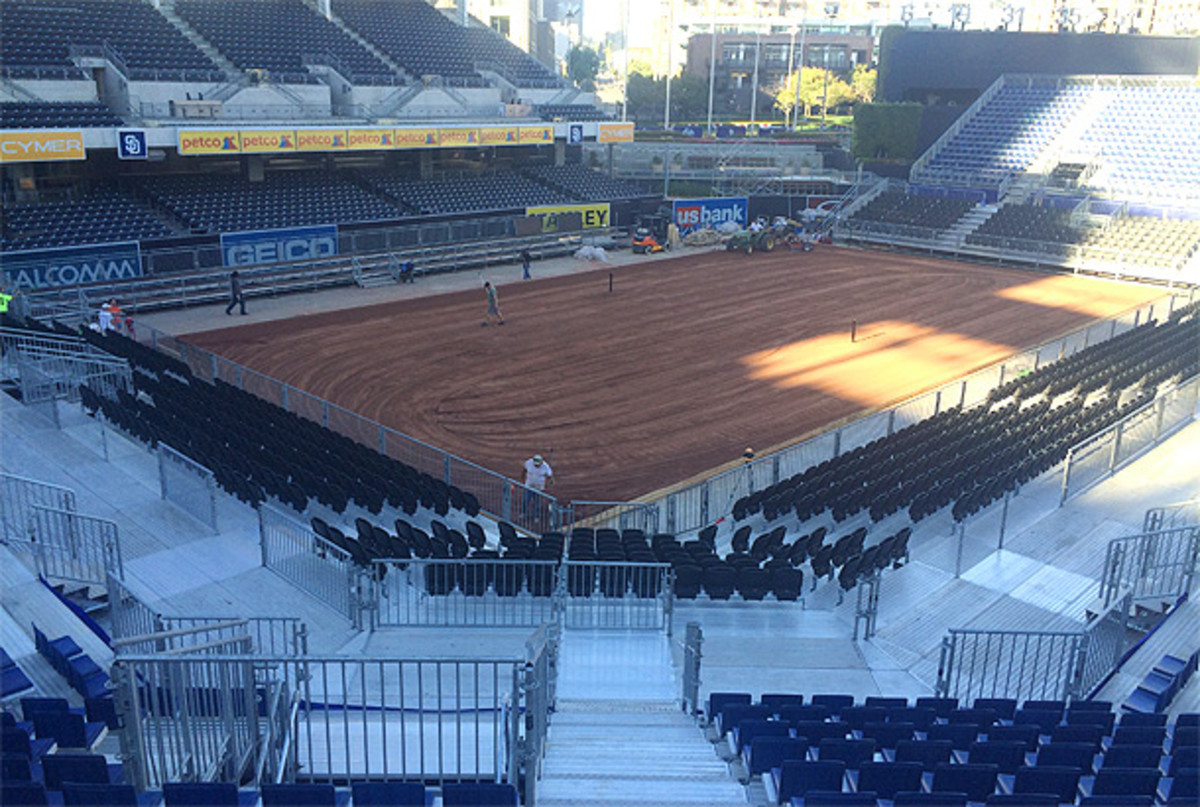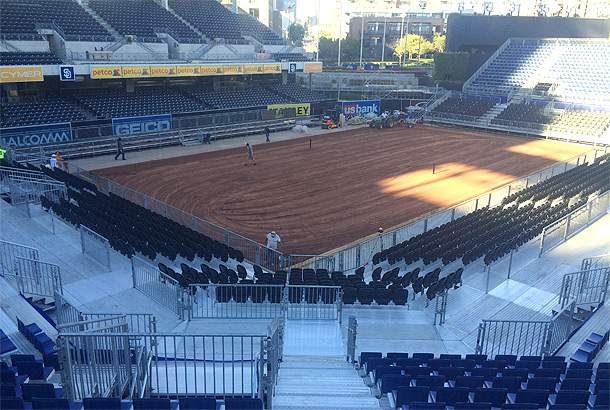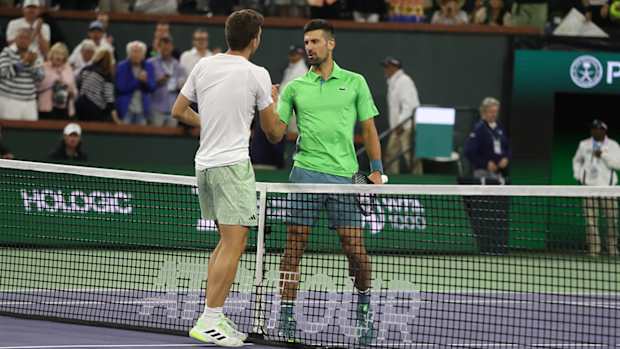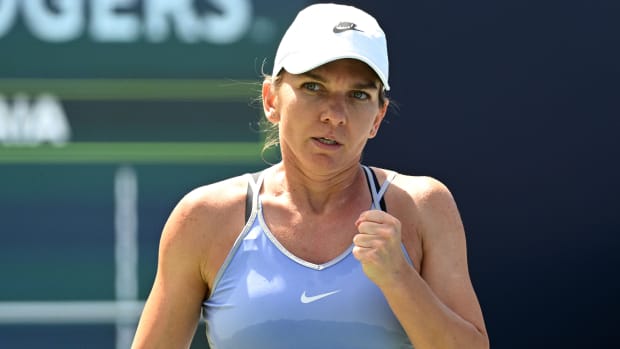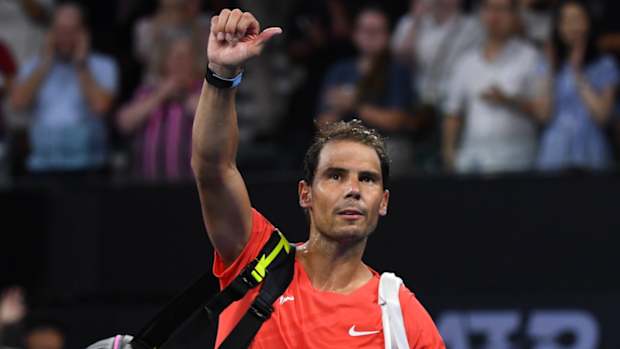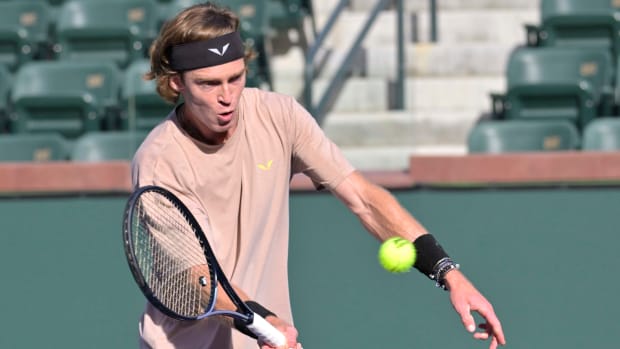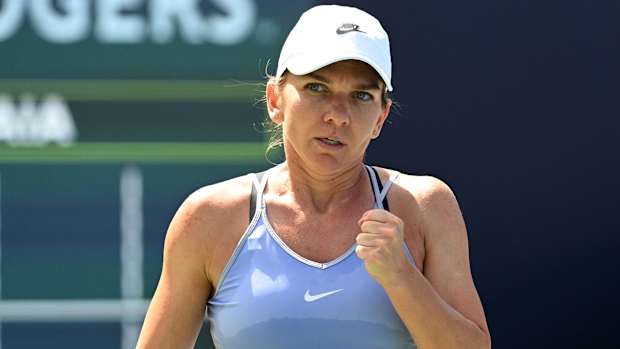Petco Park temporarily turned into a tennis stadium for Davis Cup tie
A red clay tennis court currently sits in left-center field of Petco Park. (Courtesy of the USTA)
By Tim Newcomb
The U.S. hosts Britain in the first round of Davis Cup this weekend, giving the USTA the freedom to choose where and on what surface the tie is played. So, naturally, the U.S. went all in. Not only did it choose to play on red clay, a rarity, but it also built the court in the left-center field of Petco Park, home of the San Diego Padres.
“It is what the guys wanted,” said Jeff Ryan, USTA's senior director of team events. “[Doubles specialists Bob and Mike Bryan] feel comfortable on it and they thought the folks from Great Britain, led by Andy Murray, would be challenged by it. We are using it to our advantage.”
If bringing more than 50 tons of red clay into an MLB park is what it takes to slow down Murray, the world No. 6, then the U.S. is all for it.
The court, which cost $750,000 to set up, is situated just feet from Petco’s picturesque Western Metal Supply Co. brick building and the existing scoreboard system. Ryan says it just made sense to locate the court as close as possible to the field’s main access point. The location also allows for the use of 2,000 permanent Petco Park outfield seats; 6,000 temporary seats bring the total capacity up to 8,000 seats for the venue.
“We wanted to bring stuff in and drop it right there,” he said. “We didn’t want to truck it to right field. It is as simple as that.”
Several layers of protection went down first to ensure that the grass won't be completely mangled. (Courtesy of the USTA)
In order to protect the pristine Bermuda grass on the field, crews laid protective plastic, a fabric membrane and wood. On top of that sits 250 tons of crushed domestic limestone to form the court’s base, bulldozed and rolled to exact flatness based on laser guides. The European clay, brought in from Italy, sits about 1¼ inches thick. It was spread out in a similar manner to an old-school fertilizer spreader, and then coated.
Putting a tennis court inside a stadium has held “long-term interest” for Ryan, and now others want in. While Ryan says there has been interest from facility managers in the past, whether at University of Phoenix Stadium or Philadelphia’s PPL Park, “the decision to come here and do it contributed to a rejuvenation of that idea and concept,” he said. “Seeing the footprint and what it looks like, it is really impressive.”
If Petco proves a success, we could see more than red clay in a baseball outfield. After all, Ryan knows a thing or two about laying a hard court.
Here's a time lapse video showing off the transformation of Petco Park.
http://youtu.be/W-r4CpNJ-Gw
Tim Newcomb covers stadiums, design and technology for
. Follow him on Twitter at
.
